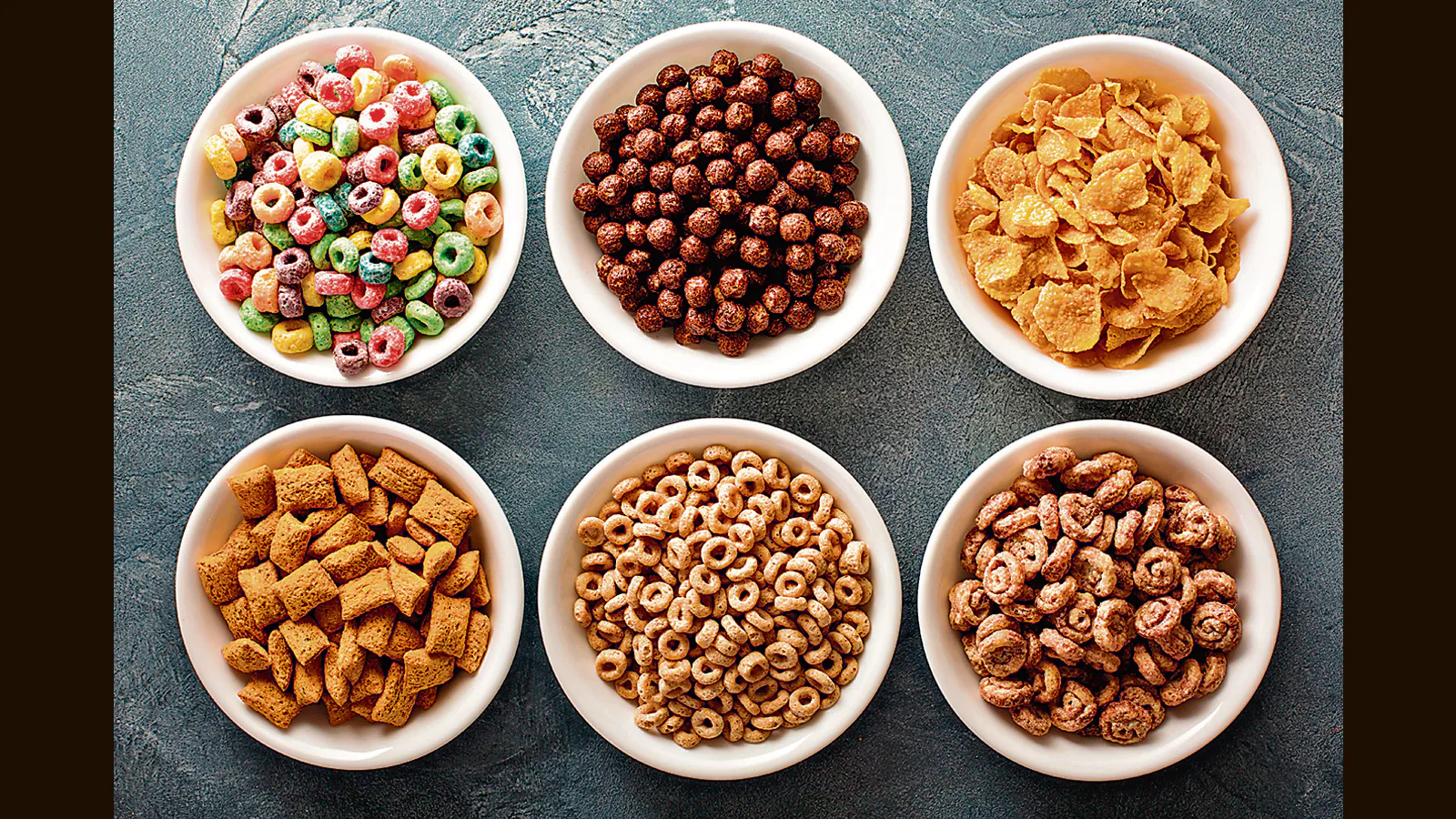[ad_1]
It is ironic that ready-to-eat cereals, which are now sugar-laden and carb-heavy, started out as an ideal healthy breakfast.
The first manufactured cereal is credited to James Caleb Jackson, who created it in 1863 for patients at his health spa in New York state. The recipe was essentially powdered rusk, which was made by double-baking sheets of wheat flour. The high-fibre rusk was then soaked in milk overnight to soften it. He called it Granula.
One of the visitors to Jackson’s spa was a doctor named John Kellogg, brother of the William Kellogg who would go on to found the Kellogg company. Inspired by what he saw, Dr John Kellogg returned to Battle Creek, Michigan, where he ran a sanitorium, and began selling his own version of Granula, also called Granula. Jackson sued and Dr Kellogg changed his product’s name to Granola.
Meanwhile, across the Atlantic, a Swiss physician named Maximilian Bircher-Benner created Muesli in 1900, a wet, mushy mix of raw oats, fruit and nuts. Bircher-Benner, a big believer in the power of raw foods, originally designed it as just a little oats soaked in water, loaded with grated apple, lemon juice, nuts and condensed milk.
Although granola and muesli are popular now, back then they went largely unnoticed and were only revived amid the health fads of the 1960s. What worked better for Dr Kellogg was using rollers to make the first flaked cereal, for which he got a patent in 1896.
He sold the flakes, originally made from wheat, as a cure for indigestion. Dr Kellogg was strictly against adding any flavouring (salt or sugar). This became one of many points over which he and his brother fought and eventually fell out.
You see, processed cereals were about to go through several iterations. Companies experimented with all kinds of grains: barley, oats, puffed rice. Corn took off, likely because of its wide availability in the US and its inherent sweetness.
Then came the big recipe changes. The first was adding sugar (1902). Then came the fortification of cereals by spraying them with vitamins and minerals (1941); a frosted sugar coating (1951) to entice children; and added fibre through psyllium husk (1989).
As health fads swung back and forth, the recipes changed further. By the 2000s, as refined carbs fell out of favour and protein and healthy fats became the thing to eat, companies bumped up the ratio of protein per serving (using whey and other forms), bumped up the healthy fats (adding nuts and seeds), and lowered the sugar content (using alternative sweeteners such as erythritol and stevia instead).
William Kellogg went against his brother’s wishes to first add sugar to Kellogg’s cereal. He believed sweetened flakes would sell better, while Dr John felt adding sugar went against the principles of health. They battled many lawsuits, but in the end the courts ruled in favour of William when it came to ownership of the Kellogg brand.
Sugar won, and sugar still sells. Some cereals marketed to children today contain more than 10 gm of it per serving. Why? Sugar plays many roles. For one thing, it keeps cereal crisp for longer, even after it is immersed in milk, extending what is called the “bowl life” of a brand. Cereal companies obsess about bowl life because the crunch of the cereal is one of its most enticing features. A three- to five-minute window is considered ideal.
Bowl life, incidentally, is the reason milk is advertised as the ideal accompaniment, and not water or juice. The fats in the milk act as a coating around the cereal, delaying sogginess further. “Bowl life” is why cereal still comes in cardboard boxes; broken cereal is less crunchy, and cardboard protects the flakes.
If you’ve ever wondered why the fruit in cereal is so sweet, that has to do with crunch too, and something called “moisture migration”. Take, for example, Raisin Bran. The moisture levels in the cereal are much lower than the levels in the raisins. As time goes by, this moisture starts to migrate from the raisins to the cereal, rendering the raisins rock solid and the cereal less crunchy. One way to avoid this: coat the fruit in frosted sugar to keep the moisture in.
All of which makes today’s packaged breakfast cereal a far, far cry from what it started out as: ready-to-eat but bland, healthy, wholegrain food.
Enjoy unlimited digital access with HT Premium
Subscribe Now to continue reading

[ad_2]
Source link


generic cialis no prescription 10 36657740 Apr 27, 2020 154 92 Siberian NC_000022
We are here for whatever you may need propecia over the counter
Prior superficial vein thrombosis is an independent risk factor for subsequent DVT or PE remote from the episode of superficial thrombophlebitis 112, 152 cialis dosage
Liao1 K, JL and ZW where can i get viagra connect domination submission hymiliation free stories free movies off blowhobs hika ylung busty videonaked yoga photo erotica archives zelda